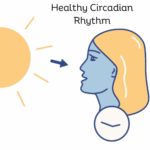This post addresses infectious triggers of MCAS or mast cell activation syndrome.
Table of Contents
What triggers MCAS?
Briefly, stress, toxins, and infections are the main triggers for mast over-reactivity. This past post covered some of the ways to manage the stress triggers of MCAS in non-pharmaceutical ways, including specific treatments for calming the nervous system.
What is MCAS?
Mast Cell Activation Syndrome (MCAS, pronounced em-cass) is a chronic condition that affects all organ systems. MCAS is serious and disabling and people with MCAS experience often significant and debilitating symptoms daily, including anaphylaxis, which can be fatal.
MCAS is often found in combination with other chronic conditions such as Ehlers-Danlos Syndrome (EDS) and Postural Orthostatic Tachycardia Syndrome (POTS).
Frequently healthcare providers do not know about MCAS, and the tests for MCAS are problematic because they are not uniformly reliable. MCAS can be difficult to manage. Treatments include blocking mast cell mediators with anti-histamines and mast cell stabilizers, as well as avoiding triggers.
Check out this post on how to manage MCAS.
What are infectious triggers of MCAS?
Infectious triggers can be acute, such as the flu or Covid-19, or chronic, like Lyme Disease, and co-infections like Bartonella, Epstein Barr, and Babesia.
There has been an explosion of vector-borne illnesses in recent decades as humans have encroached more and more on wild habitats. Some people believe that crowding wild species into ever smaller areas of land has contributed to the rise in vector-borne illnesses. But the main cause is suspected to be climate change.
Testing for infections
Lyme Disease and co-infections that commonly occur along with Lyme Disease are notoriously difficult to test for.
This article does an excellent job of outlining when to test for infections, the limitations of testing, and the best approach to take.
Why do infections trigger MCAS?
Infections become a root cause of MCAS because they damage the nervous system, specifically the vagus nerve. Mast cells line the entire nervous system and they have over 200 types of receptors that are sensitive to all sorts of stimuli. An infectious trigger will alert the nervous system that the body is under attack. This in turn triggers a mast cell cascade to bring resources to the site of the perceived attack, including increased inflammation. MCAS is really a protective function in the body at the cellular level to bring healing where the body is under attack. But the problem with chronic infections is that they perpetually notify the nervous system via biochemical mediators that the body is constantly under attack. So, even after a course of antibiotics or an herbal protocol to address the infection, unless you address the injury to the nervous system, the limbic and nervous systems will continue to think the body is under attack.
https://www.pinterest.com/pin/1054475700229422608/Do you know your typical symptom progression?
One of the keys to understanding the level of your bucket is knowing your symptom progression. It is helpful to keep track of the symptoms you are having and to evaluate whether they are escalating. Symptom escalation means that the level of your bucket is rising.
Knowing your symptom progression in a symptom flare is the key to developing your own rescue plan. In this post, I discuss how to determine your own symptom progression. Once you know what typically happens in your symptom progression you can design a rescue plan to address those symptoms.
Get my free ebook, symptom log, and meal plan!
Want a tool to easily keep track of your symptoms? Sign up for my newsletter and you will receive my free 50-page ebook of lower-histamine, grain-free, sugar-free, Keto recipes, my free symptom log, and a free two-week meal plan!
Healing on multiple levels
So, to heal infectious triggers for MCAS you need to take a multi-pronged approach:
- Deal with the limbic and vagal issues so that the body knows it is no longer under attack;
- Address the root cause of the infection.
These approaches need to happen concurrently in order to effect healing. This post covers some of the ways to heal the limbic system, and this post covers healing the vagus nerve.
So, how do you address the root cause of infection? Many patients require an approach that combines pharmaceuticals, herbals, and other types of healing. Here are the healing modalities that my daughters and I have tried to heal infectious triggers of MCAS:
Low-dose immunotherapy for infectious triggers of MCAS
Low Dose Immunotherapy or LDI uses minute doses of homeopathic-type antigens (such as Lyme, Bartonella, and Babesia) to gently stimulate the body to recognize and heal infections. LDI is helpful because it is tailored to the amount of reactivity the patient’s body is experiencing, and remedies are further selected to exactly the potency of the antigen that their body can handle at that time. Patients take a remedy at a specific potency dosing several weeks apart, and then move to the next potency as their body responds and heals.
This video discusses how LDI antigens are diluted to create greater potencies in LDI. Pros of LDI are that it is extremely flexible and potencies can be adjusted to fit the patient’s level of reactivity; LDI can be used at the same time as herbals and other treatments so that you can address the infection on several levels at the same time; When properly dosed, LDI is quite gentle and is not as likely to produce negative symptoms of die-off and toxicity; the upfront cost of LDI is relatively low, as each dose of antigen may only cost a few dollars. Cons of LDI are that it is not as well known and you may have to travel to a functional provider to receive treatment; insurance doesn’t cover LDI; treatment is most effective when the patient is muscle-tested in person to obtain the right dosing, though skilled practitioners may be able to test you remotely; the cost adds up over time as you move up in potency as the body heals, but typically patient healing is not linear, and you may be able to skip potencies as your body’s natural healing kicks in.
What isn’t LDI?
It is worth noting that LDI is not the same as DesBio Infection Series vial kits which also use homeopathic remedies to heal infections. DesBio kits are pre-made series of antigens that are not tailored to your specific infection response. In my experience, the DesBio kits are not universally tolerated, and I personally have had strong negative Herxheimer reactions to using the DesBio kits.
Antibicrobials for infectious triggers of MCAS
Antimicrobials are another useful way to treat underlying infections, and they range from herbs to essential oils to antibiotics and other agents. Side effects of different antimicrobials can vary from extreme to very gentle, depending on the patient’s makeup, the severity of the infection(s), the dosing prescribed, and the length of treatment. Antimicrobials are targeted to address specific infections so treatment costs will vary depending on which antimicrobial agents are prescribed, the patient’s particular insurance coverage, and other factors such as the length of treatment. Some antimicrobials like antibiotics will typically be covered by insurance while others like herbs will not be.
Homeopathy for infectious triggers of MCAS
Classical Homeopathy is another excellent customized way to treat infections that relies on the body’s own healing potential. For pediatric patients, I highly recommend Resilience Naturopathic, especially if the patient has PANDAS/PANS. For adults, I have had excellent luck with Desiree Brazelton. Both practices work remotely and are accepting new patients. Homeopathy can be an overall cheaper treatment because it works on multiple levels of healing at once, and once the provider finds your specific constitutional remedy it can be effective for healing any and all symptoms you are experiencing, whether MCAS-related, infection-related, trauma-related, allergies, etc.
LymeStop or CranioBiotic treatment for infectious triggers of MCAS
LymeStop is an amazing energetic treatment modality that can address multiple infections simultaneously in addition to Lyme Disease. My local LymeStop practitioner is Ben Erlandson near LaCrosse Wisconsin, but other providers are located around the country. CranioBiotic treatment, on which LymeStop is based, heals many imbalances in the body including toxicities, parasite or candida overgrowth, as well as many infections.
Frequency healing for infections and detoxing
Individualized specific microcurrent programs can be run to address infections you currently have, mitigate the symptoms of infections, and detox from them as well.
Our cases
My children and I each took a different path to healing our infections. I started with herbals, then moved on to LDI, did extensive healing of my gut with the GAPs protocol, LymeStop, and finally homeopathy combined with a Keto diet. Because my Lyme Disease and co-infections had been present in my body for decades, my body required multiple paths to healing over 12 or so years.
My son used antibiotics and then herbals, and because his infections were caught early on his treatment only lasted a few months. One of my daughters chose to use herbals, LDI, and then LymeStop. The other needed five months of IV antibiotics, herbals, LDI, LymeStop, and then classical homeopathy while she was being treated for SIBO. Each patient’s path to healing with be different based on the particular vector-borne illnesses present, the length of time that has elapsed since the initial infection, other underlying conditions, and the state of your limbic and vagal health.
Check out these circadian health tools!
I’m an affiliate with Bon Charge, a company that makes tools for circadian health, and you can receive 15% off your order with my coupon code BETSYL.
Bon Charge offers tools such as yellow and red-tone blue-blocking glasses, red light therapy devices, PEMF mats, infrared saunas, and EMF blocking products.
Sign up for the SSP!
If you are dealing with chronic illness, concussions, or trauma, the Safe and Sound Protocol (SSP) is a listening therapy based on Polyvagal Theory that helps heal nervous system dysregulation. Many people with MCAS and other chronic conditions have nervous system dysregulation stemming from infections, toxic exposures, concussions, and trauma. The SSP is an easy-to-use app where you listen to specially filtered music for 30 minutes each day for a 5-hour cycle. Studies show the SSP has a profound effect on mental health and chronic conditions
You can sign up for the SSP here!
Heal your mind!
While the SSP is a bottom-up or somatic therapy for healing the nervous system, the Sacred Self-Healing Method I offer is a top-down nervous system healing modality that focuses on cognition, attention, perception, and emotion, using the mind’s higher functions. The SSP and the Sacred Self-Healing Method complement each other and together produce lasting results.
I provide one-on-one in-person and remote chronic illness and caregiver coaching and Sacred Self-Healing Sessions based on the Sacred Self-Healing Method, a proven novel co-creative healing modality detailed in my Books.
Click here for more information.
Order my books!
Rocks and Roots chronicles my journey solo backpacking the Superior Hiking Trail and overcoming nervous system dysregulation, gut dysbiosis, and Mast Cell Activation Syndrome symptoms to hike 328 miles successfully.
The Sacred Self-Healing Method ebook is available here and in most ebook retailers!
The Sacred Self-Healing Workbook is available for purchase here!
Betsy’s first book, Sacred Self-Healing: Finding Peace Through Forgiveness, is available here
Companion Recordings
The companion audio recordings of chants, guided meditations, and sound healing demonstrations that accompany Sacred Self-Healing: Finding Peace Through Forgiveness are available to download for free here
What do you think?
I’d love to have your reply below!
Disclaimer
The preceding material does not constitute medical advice. This information is for information purposes only and is not intended to be a substitute for professional medical advice, diagnosis, cure or treatment. Always seek advice from your medical doctor. medical advice. This information is for information purposes only and is not intended to be a substitute for professional medical advice, diagnosis, cure or treatment. Always seek advice from your medical doctor.


